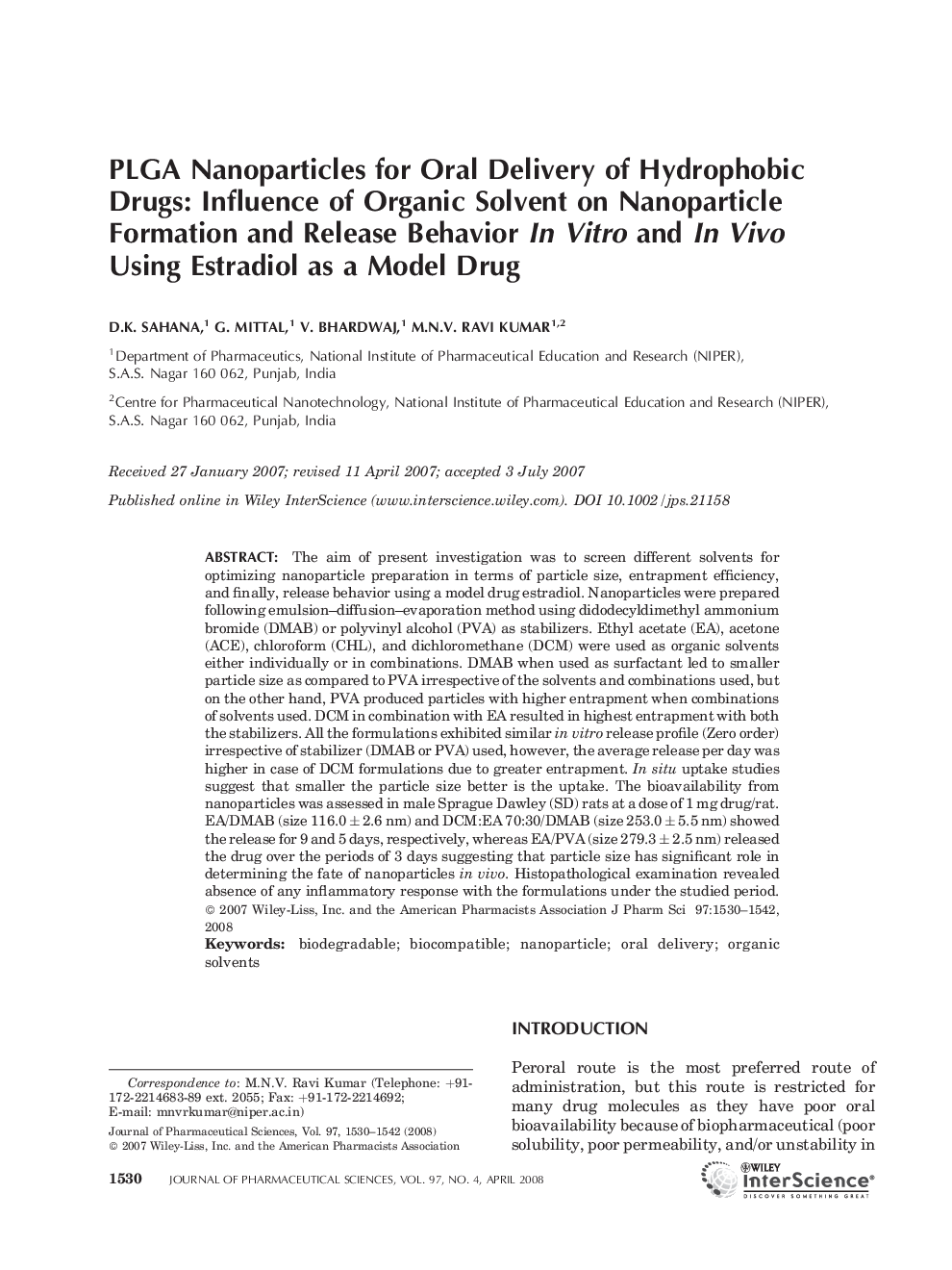| Article ID | Journal | Published Year | Pages | File Type |
|---|---|---|---|---|
| 2487517 | Journal of Pharmaceutical Sciences | 2008 | 13 Pages |
Abstract
The aim of present investigation was to screen different solvents for optimizing nanoparticle preparation in terms of particle size, entrapment efficiency, and finally, release behavior using a model drug estradiol. Nanoparticles were prepared following emulsion-diffusion-evaporation method using didodecyldimethyl ammonium bromide (DMAB) or polyvinyl alcohol (PVA) as stabilizers. Ethyl acetate (EA), acetone (ACE), chloroform (CHL), and dichloromethane (DCM) were used as organic solvents either individually or in combinations. DMAB when used as surfactant led to smaller particle size as compared to PVA irrespective of the solvents and combinations used, but on the other hand, PVA produced particles with higher entrapment when combinations of solvents used. DCM in combination with EA resulted in highest entrapment with both the stabilizers. All the formulations exhibited similar in vitro release profile (Zero order) irrespective of stabilizer (DMAB or PVA) used, however, the average release per day was higher in case of DCM formulations due to greater entrapment. In situ uptake studies suggest that smaller the particle size better is the uptake. The bioavailability from nanoparticles was assessed in male Sprague Dawley (SD) rats at a dose of 1 mg drug/rat. EA/DMAB (size 116.0â±â2.6 nm) and DCM:EA 70:30/DMAB (size 253.0â±â5.5 nm) showed the release for 9 and 5 days, respectively, whereas EA/PVA (size 279.3â±â2.5 nm) released the drug over the periods of 3 days suggesting that particle size has significant role in determining the fate of nanoparticles in vivo. Histopathological examination revealed absence of any inflammatory response with the formulations under the studied period. © 2007 WileyâLiss, Inc. and the American Pharmacists Association J Pharm Sci 97:1530-1542, 2008
Related Topics
Health Sciences
Pharmacology, Toxicology and Pharmaceutical Science
Drug Discovery
Authors
D.K. Sahana, G. Mittal, V. Bhardwaj, M.N.V.Ravi Kumar,
